The (Mostly) Forgotten Battle For American Independence...in Yorkshire.
Sorry, *what*? And *where*?
Hello! This is Everything Is Amazing, a newsletter about science, curiosity, attention and wonder.
In the next edition, we’re returning to the fascinating world of colours, to wrap up the whole fifth season of EiA that started almost a year ago.
But today - well, this is a quick one, since it’s the anniversary of one of the most impactful bouts of rethinking and overcoming sunk cost fallacy in modern Western history, as thirteen British colonies decided they’d had enough and lodged what we British called “their extravagant and inadmissable Claim of Independency".
Since 51% of the readers of this newsletter are based in those former colonies turned world superpower, I’m guessing you’d much rather be spending the day burning effigies of King George III, throwing perfectly good tea in your nearest harbour, eating “pan-cakes” and “hot-dogs” and other odd-sounding things, and hopefully not checking your email or spending it on social media like this poor wretch:
But before you go celebrate throwing off our cruel imperialistic yoke - did you know this mostly-forgotten slice of Independence history, which took place off the northern coast of England, of all places?
As you approach the site of one of the most celebrated battles of the American War of Independence, you’ll pass a huge wooden bird.
It’s almost as tall as you are, and it has a furious expression, like it’s about to creak Harryhausen-like into life and headbutt you over the cliff’s edge. In fact this isn’t quite as stupid as it first sounds – you’re entering the nesting territory of one of the UK’s Special Areas of Conservation, where cute sea-birds turn into razor-beaked, enmity-propelled javelins aimed at your head…
Take The Hint, says the wooden guardian silently.
It’s weird to step off the clay of the Holderness coast. This is a soft part of the British Isles, but suddenly you’ll find the ground hard, the path crunching with chalk fragments. This headland is northern England’s only chalk sea cliff, and to the north and the south of it, the coastline is scooped out by some of the fastest rates of erosion in Europe. Nothing endures because nothing has had time to dry: the glacial tills and boulder clays that make the surface of East Yorkshire were laid down just 20,000 year ago.
That’s nothing. That barely registers on normal geological timescales. A wiper-blade of glacial ice sweeps up to the pole, leaving a smear of dirt in its wake…onto which we’ve crammed all our local history.
Now I’m seeing what’s underneath, and it’s so old it has basically been here forever.
Down here on the beach, you hear everything at least twice. The sound clatters off the chalk wall, echoing and multiplying and making the world sound badly produced. But it’s also nearer. The Holderness coast is flat, and sounds travel a long way round here, never quite dying away to nothing – and you only hear that when they’re blocked, absorbed, gone. Down here, there’s the sea on one side and there’s what you did a split-second ago on the other, and that’s it.
That’s all you’re aware of. You just stepped off the modern world, and now you’re standing looking up at layers of rock that used to be alive a hundred million years ago.
You continue to stand and stare, because, how else do you respond to all that?
Let’s imagine you’re standing here on a September night 244 years ago, looking out to sea.
The cliff behind you booms with distant cannon-fire, as the newly-minted United States of America fights for its independence a couple of miles offshore.
What’s happening out there is heroic, exciting and faintly ridiculous. Thirteen British colonies in North America, 3400 miles away, have decided they’ve had enough of Britain’s outrageous nonsenses, and they’ve declared independence.
That’s not the ridiculous bit, of course. What’s ridiculous is that an American Continental Navy squadron is fighting the British here, off the coast of Yorkshire. Formerly anchored in France, it’s been sailing up and down the coast of Britain, attempting to cut British naval supply lines and generally spoiling for a fight.
At Flamborough Head, it finds a prey worthy of attention: a southbound convey of 40 British ships, protected by the 40-gun Serapis and the 20-gun Countess of Scarborough.
What follows, what’s taking place amidst all those thunderous flashes you’re watching right now, is one of the most extraordinarily fierce battles in naval history, as the American captain John Paul Jones turns his battered 40-gun East Indiaman Bonhomme Richard towards an enemy that outguns him almost two to one.
As legend has it, the battle only turns when Jones rams his fatally shot-up ship into the side of Serapis, and one of his seamen has the quick wit to lug a bucket of grenades to the ship’s side so he could toss them into holes or hatches in the British ship’s hull. One lands in the lower deck’s gunpowder stores. The rear half of Serapis blasts apart, killing the bulk of its gun-crew and putting the entire lower gundeck out of action.
Shortly after, the British captain is striking his colours.
You’re further out now. Seaweed and limpets underfoot: you’re going to go over at some point and it’ll hurt, so you stop and watch the jet-skis zipping around the ancient battleground, watch the wind turbines down the coast turn and turn and turn, feel the sun get low enough for the cold wind to cut into your fleece, and suddenly you’ve seen and felt enough and your brain is full…
And then it’s time to clamber up the cliff, out of history, back to the fascinating absurdities of the modern world, where you can remember who you are again.
Directions For Getting To Flamborough Head
Go up the east coast of Yorkshire north of Hull, and keep going until it bulges outwards. You can’t miss it – there’s a bloody great big wooden bird in the way, and lots of chalk (the rock, not the tiny white sticks your teacher used to throw at you for not listening in class…I think I’m projecting, sorry).
The village of Flamborough is sleepy and tiny, and the cliffs at nearby Bempton (pictured) are high and terrifying, so if you want to stock up on proper lunch-supplies and maybe a hard-hat to protect yourself from homicidal sea-birds, go to Bridlington. You’d like it there. It’s grand.
If you find these instructions inadequate, then (1) well, that’s too bad, this is why I’m not a travel writer anymore, and (2) you’ll probably find this guide from the Guardian much more helpful.
Thanks for reading!
- Mike
Images: Thom Holmes; Mike Sowden.

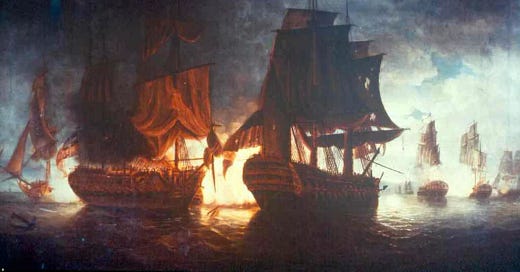



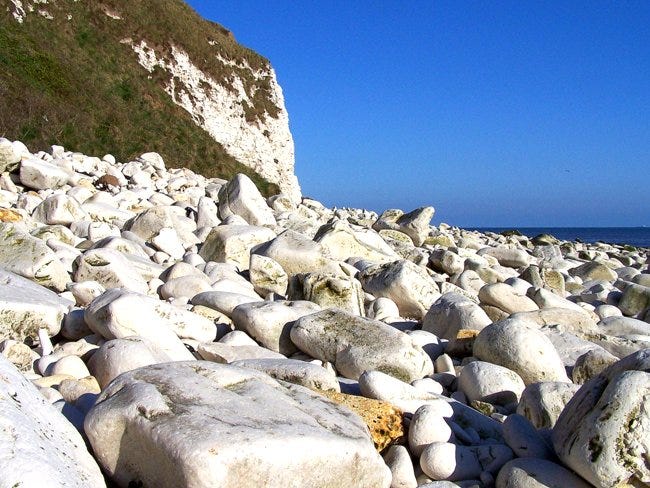
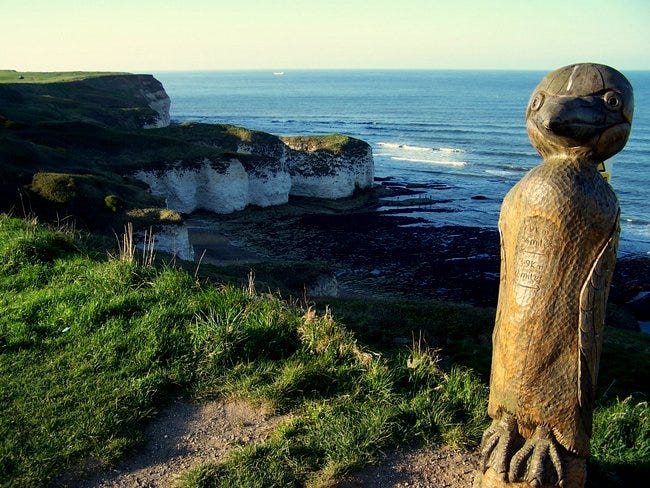
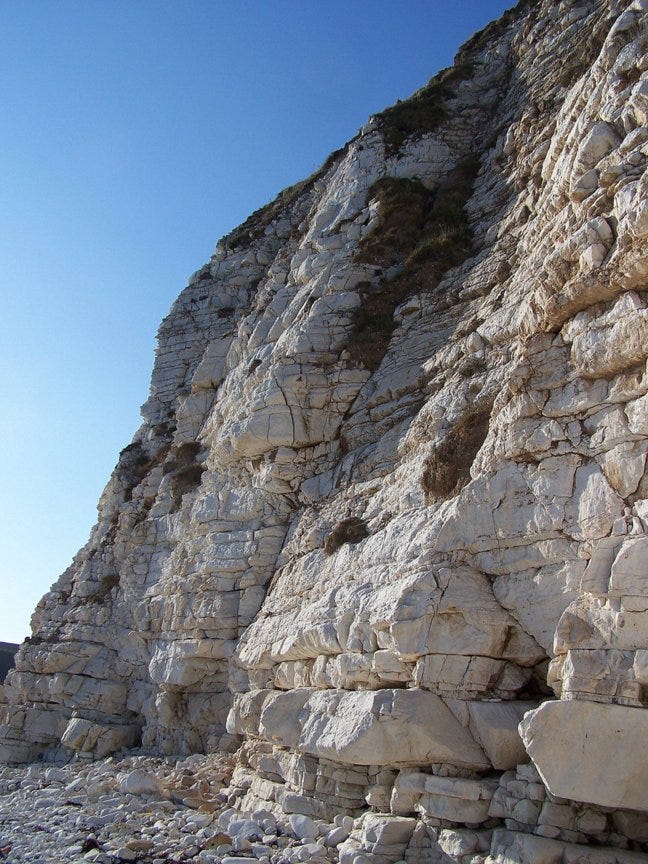
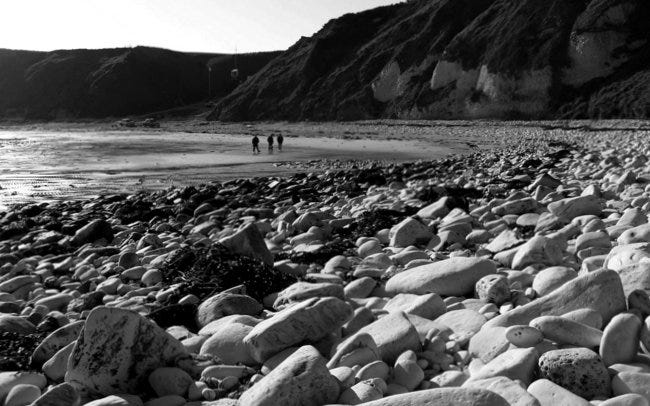



I had no idea. Thanks for that history lesson. Happy we still drink tea here-- tho reasonably taxed.
Always a fun trip Michael. My eldest son is a US Navy ex-pat. JPJ is the father of the US Navy in lore. A fun tale to remember. For me, a food lover, I am so thankful we went our own way. Nearly 250 years later we ended up with so much including tons of great fusion cooking styles and we still seem to get on pretty well. I gladly forego beans on toast and embrace the Banh Mi & Cajun food. Now in my 60s, I've managed to avoid black pudding also. Thanks for surrendering at Yorktown. I have great respect for our British legacy since you invented the sandwich and named it after a Lord. What is the best sandwich in Britain (let's exclude organ meats)? We offer the Beef on Weck, the Muffaletta and the Banh Mi. American fusion cuisine at its best. Immigration and its nurturing is our best invention. As according to CK Steefel in the comments, the tea was a good thing too we decided to keep. Thanks.